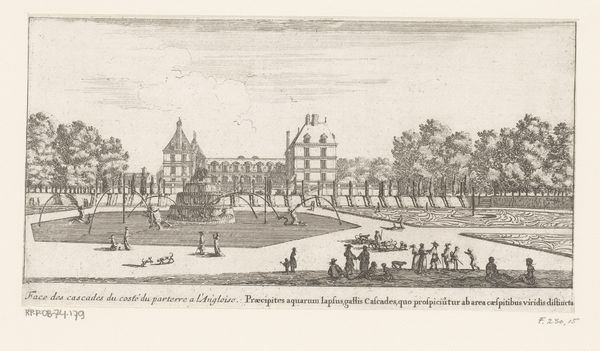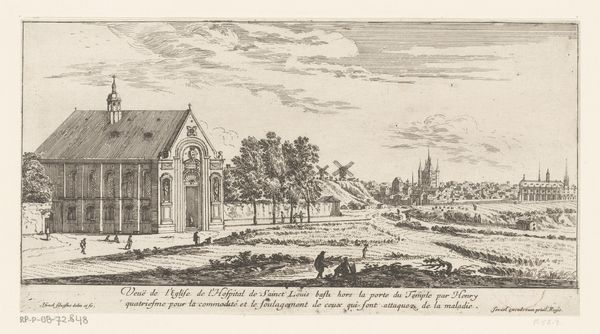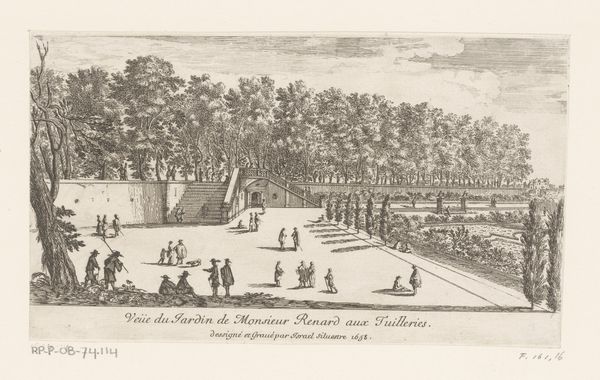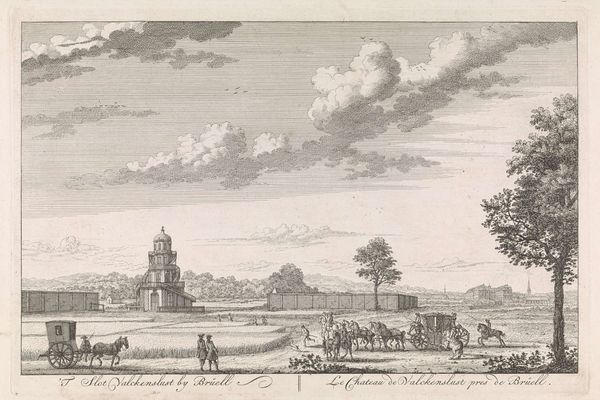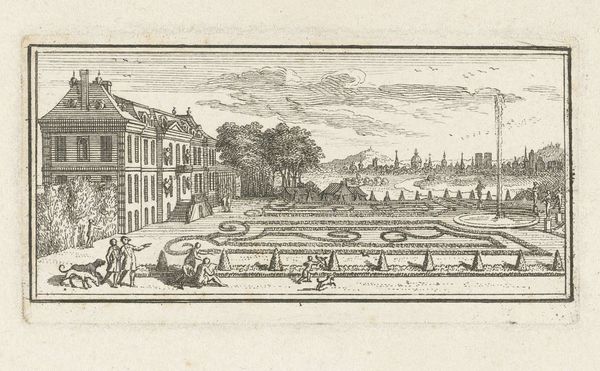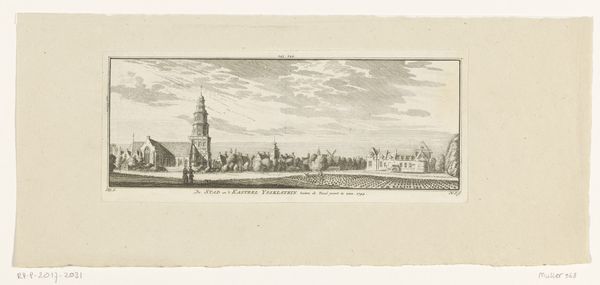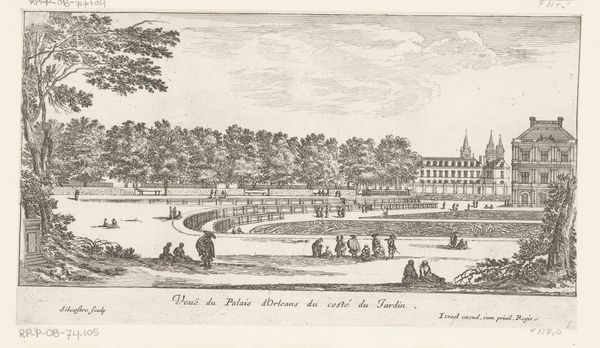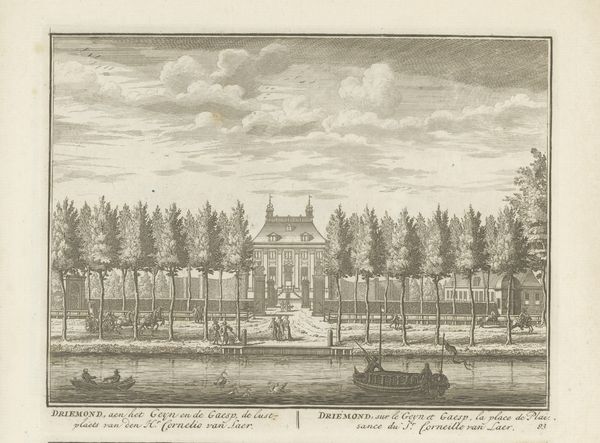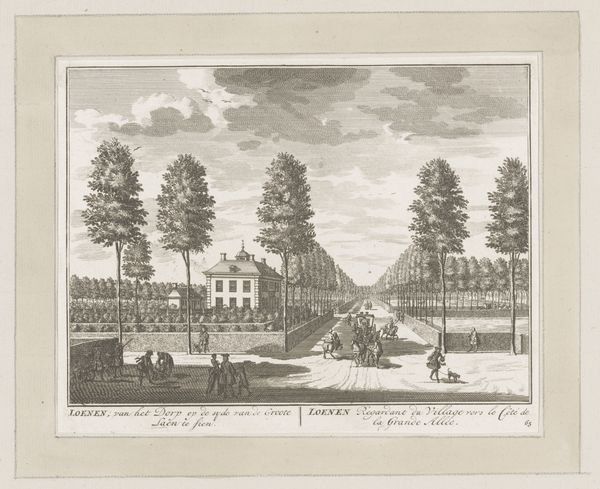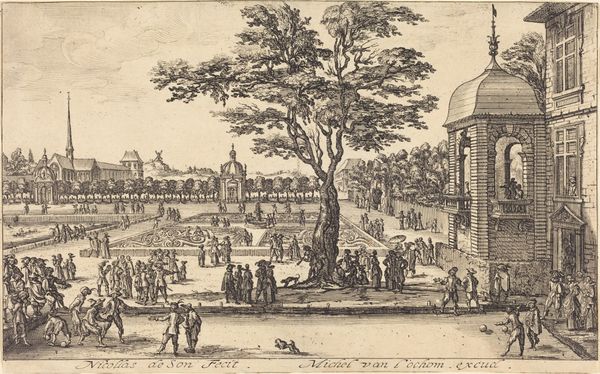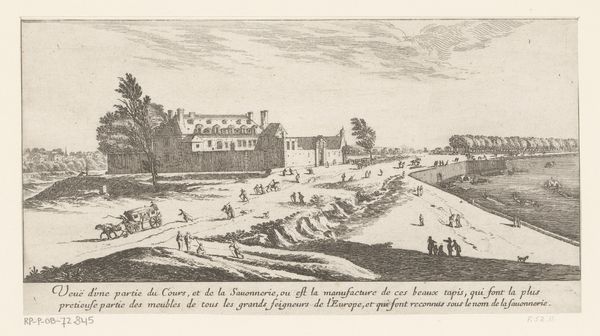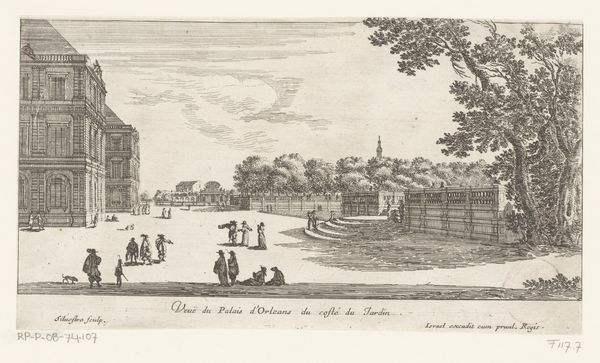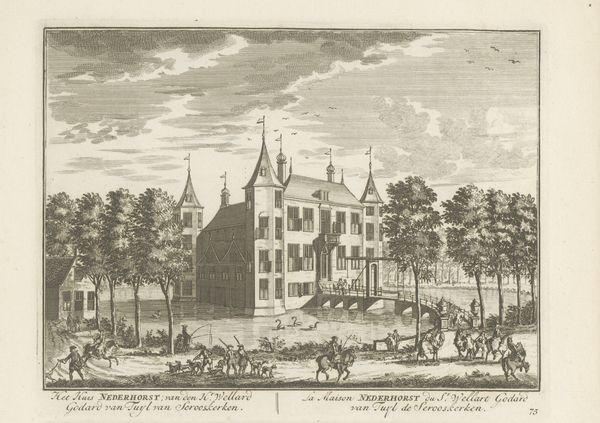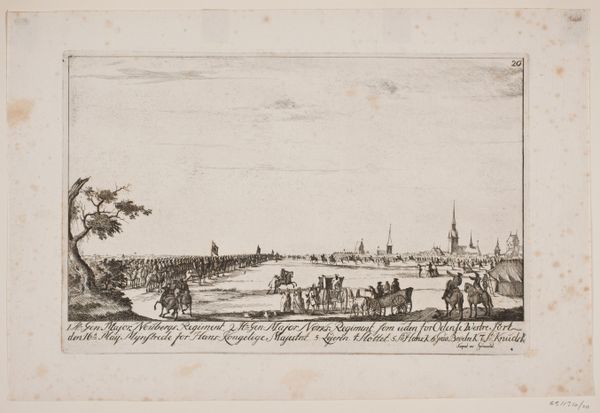
print, engraving
#
baroque
# print
#
landscape
#
perspective
#
cityscape
#
engraving
Dimensions: height 99 mm, width 166 mm
Copyright: Rijks Museum: Open Domain
Curator: Hello. Today, we're looking at Israel Silvestre's 1652 engraving, "View of the Gardens of Lusigny." What are your first impressions? Editor: It's remarkably detailed for an engraving, capturing a real sense of depth. I'm struck by how the rigid geometric garden contrasts with the implied leisure of the figures populating the grounds. What statements do you think Silvestre is trying to make here? Curator: I'd suggest we consider the engraving through the lens of power and its public display. The carefully orchestrated perspective, leading the eye deep into the landscape, is not merely about aesthetics, but also about projecting control and authority. Who was the intended audience, do you think? Editor: Presumably, it's meant for members of the court or aristocracy, serving almost like a promotional image, showing off the estate and its owner’s status. Curator: Exactly! The garden becomes a stage. Silvestre was employed reproducing prints by royal commission, effectively functioning as visual propaganda. So, what does the seemingly casual arrangement of figures contribute to this image? Editor: If the aristocracy and wealthy are commissioning art as “propaganda”, it tells the rest of society how much to admire them and, conversely, reminds them that they have very different standing in society. It’s almost performative, isn’t it? This image solidifies a certain hierarchy and celebrates a way of life inaccessible to the majority. Curator: Precisely. Think of how printed images circulated – these weren’t isolated aesthetic experiences but powerful tools. Editor: It’s been very interesting thinking about how gardens can represent political ideas as well as simply pretty spaces! Thank you.
Comments
No comments
Be the first to comment and join the conversation on the ultimate creative platform.
